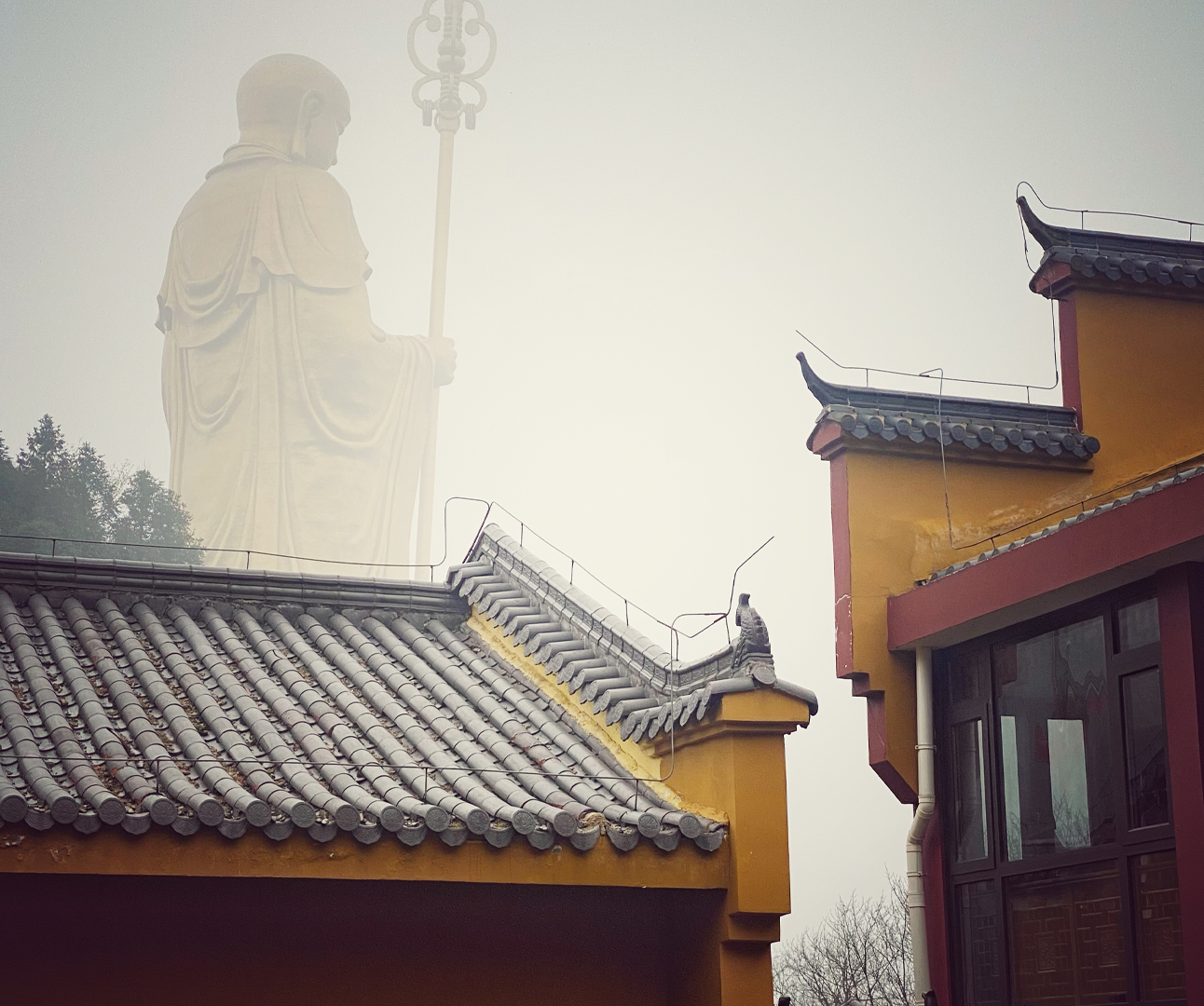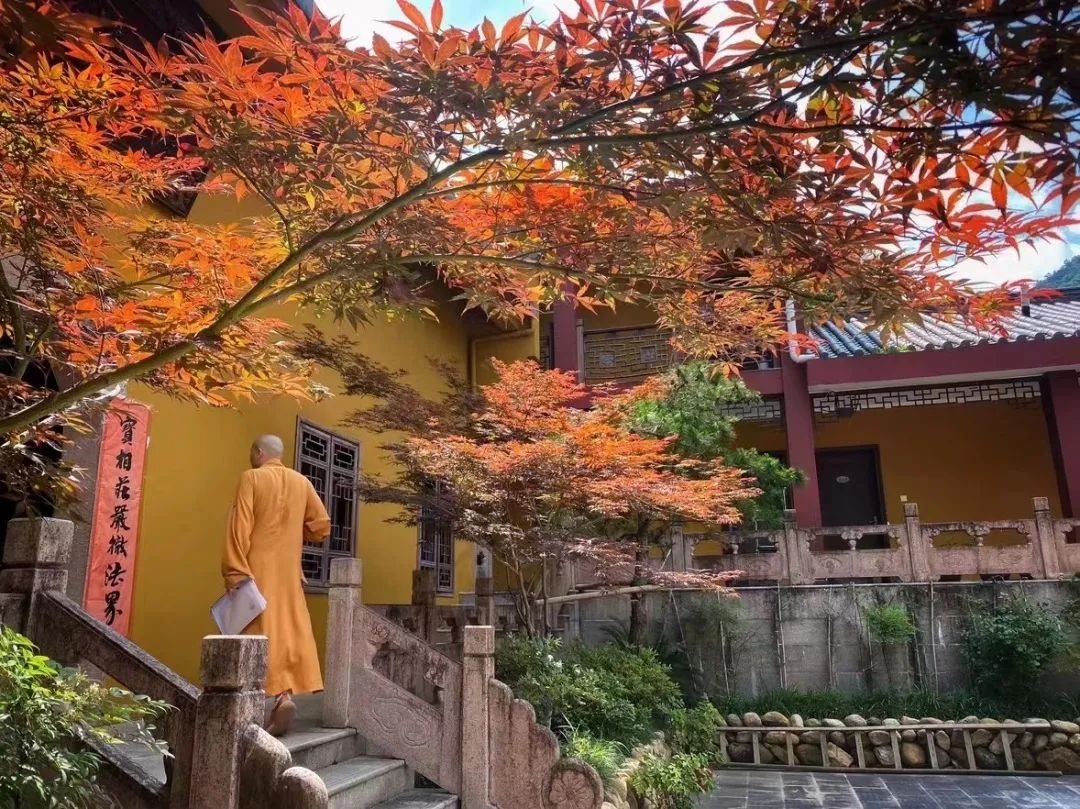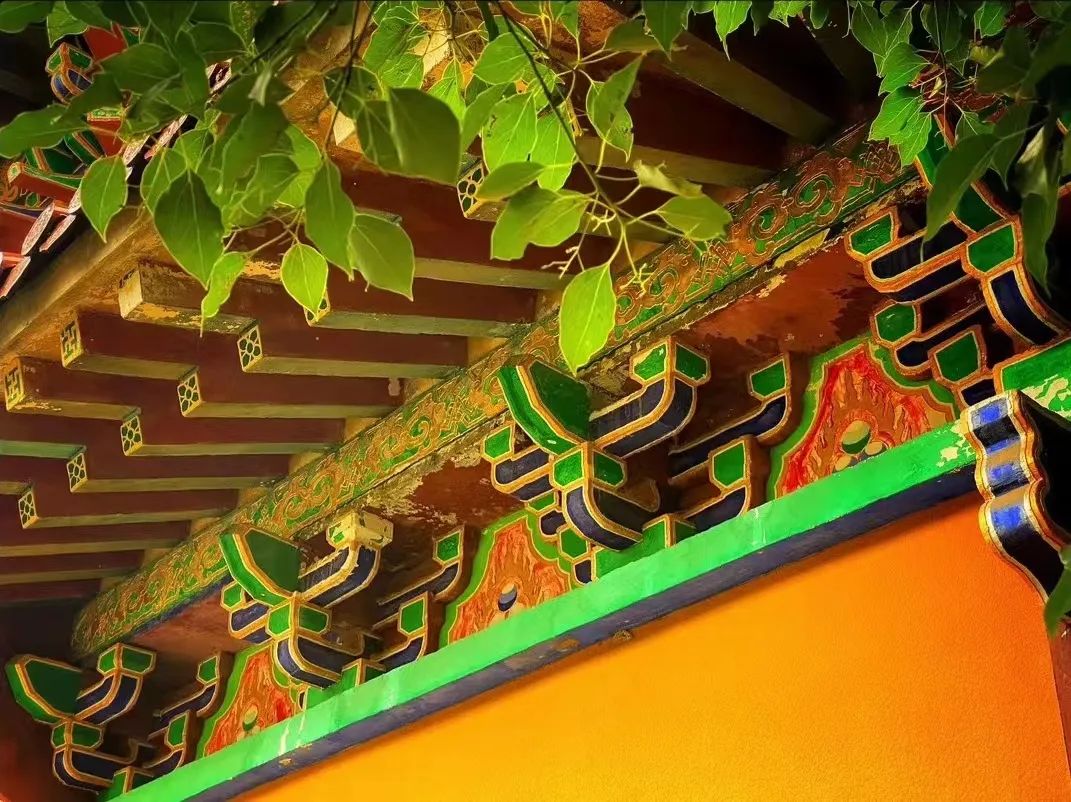
🌸 Jiuhua Mountain — Sacred Land of Kṣitigarbha Bodhisattva
Share

Jiuhua Mountain, also known as Lingyang Mountain or Jiuzi Mountain, is one of the Four Sacred Buddhist Mountains of China and the renowned bodhimaṇḍa (sacred site) of Kṣitigarbha Bodhisattva. Located in Qingyang County, Chizhou City, Anhui Province, it has long been honored as “The First Mountain in Southeast China.”
The mountain is famous for its stunning peaks and unique rock formations, which—when viewed from afar—look like nine brothers standing side by side, giving rise to its alternative name Jiuzi Mountain (“Nine Sons Mountain”). According to legend, during the Tang Dynasty, the poet Li Bai gazed upon its magnificent peaks from the banks of the Yangtze River and composed the verse “Long ago on the Nine Rivers’ shore, I gazed afar at the nine splendid peaks”, inspiring the mountain’s current name, Jiuhua Mountain.
Lotus Land of Buddhism
Jiuhua Mountain is often called the Lotus Land of Buddhism, with ancient temples scattered across its slopes. The earliest temples were built in the Eastern Jin Dynasty, and by the Ming and Qing Dynasties, the mountain flourished with 300–400 monasteries, making it one of the most vibrant Buddhist centers in China.
Many locations on Jiuhua Mountain carry the name “Dayuan” (“Great Vow”), the most famous being the Dayuan Cultural Park—home to the world’s tallest open-air bronze statue of Kṣitigarbha Bodhisattva, standing 99 meters high. After 20 years of construction, the park officially opened to the public in 2013 and has since become the landmark of Jiuhua Mountain. It is one of the most comprehensive cultural theme parks in the world dedicated to spreading Kṣitigarbha culture and spirit.
Dayuan Zen Temple
Behind the colossal bronze statue lies Dayuan Zen Temple, which is responsible for the statue’s management and maintenance, as well as welcoming pilgrims from across the globe. The temple’s guest hall is located within the Dayuan Cultural Park, while the main halls are nestled in a tranquil area to the northeast—offering peace and seclusion amid the lively atmosphere.
Built in the style of traditional southern Anhui architecture, Dayuan Zen Temple emphasizes harmony with nature—facing south, backed by a mountain ridge, and fronted by a flowing stream. This geomantic balance is believed to be beneficial for meditation and spiritual cultivation.
Inside the main hall, the Hall of Kṣitigarbha enshrines the “Three Sacred Ones of Jiuhua”:
-
Golden Kṣitigarbha in the center
-
Flanked by Min Gong (a wealthy, charitable local) and his son Daoming

Unlike many Buddhist altars, all three figures were real historical persons. According to local legend, during the Tang Dynasty, Min Gong donated ninety-nine peaks of Jiuhua Mountain to Golden Kṣitigarbha for spiritual practice, and even offered his own son as a disciple—who became known as Daoming. Later, Min Gong himself took refuge in Buddhism, becoming Golden Kṣitigarbha’s first lay disciple. Following Buddhist custom, “those who enter the monastery first are senior,” so Daoming became Min Gong’s senior in the Dharma. This gave rise to the saying: “Father and son in the secular world, senior and junior in the Dharma.”
Origins of the Three Sacred Ones
The tradition of enshrining the “Three Sacred Ones of Jiuhua” began in the Ming and Qing Dynasties, as the belief in Kṣitigarbha evolved. By the Song Dynasty, people already saw Golden Kṣitigarbha as an incarnation of Kṣitigarbha Bodhisattva. This belief became widespread during the Ming Dynasty, and the eminent monk Master Zhixu (Yi), one of the Four Great Monks of the Ming and Qing periods, confirmed in his writings that “Jiuhua is truly the manifestation place of the Compassionate Kṣitigarbha Bodhisattva.”
From that time onward, temples across China enshrined Kṣitigarbha in this form—seated on a mythical beast, flanked by Min Gong and Daoming. Records from the Qing Dynasty and the Republic of China also clearly state that Jiuhua Mountain is the sacred bodhimaṇḍa of Kṣitigarbha Bodhisattva.
A Special Day for Devotees
For followers of Kṣitigarbha Bodhisattva, one of the most important days of the year is the 30th day of the 7th lunar month—the birthday of Kṣitigarbha Bodhisattva. On this day, devotees from across the world come to offer incense, make vows, and pray for blessings, peace, and liberation for all beings.
Whether you are drawn by Jiuhua Mountain’s breathtaking scenery, its deep cultural roots, or the compassionate vows of Kṣitigarbha Bodhisattva, this sacred mountain offers a profound spiritual journey for every visitor.
Festival Memorial: Kṣitigarbha’s Birthday
We’ve prepared a simple starting point for this festival. Visit the section below and begin in minutes:
👉 Festival Memorial – Kṣitigarbha’s Birthday
👉 Start a Memorial Page · Pricing & Privacy Options





